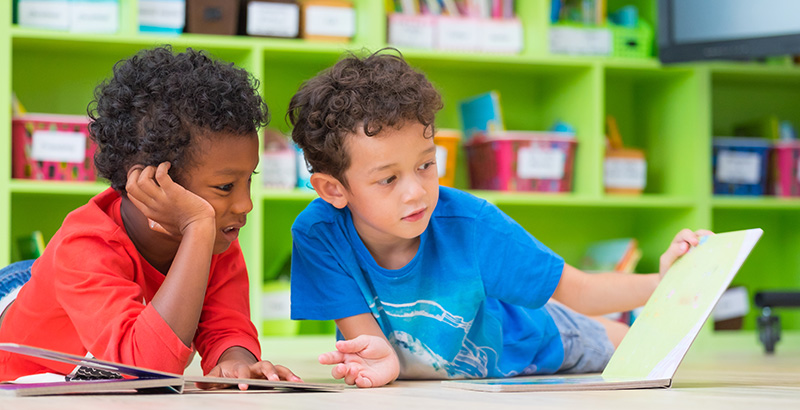1. What is SEL?
Social-emotional learning, commonly referred to by its acronym, SEL, is a method of promoting holistic child development by teaching students skills such as self-regulation, persistence, empathy, self-awareness, and mindfulness.
2. Why are schools teaching social-emotional learning?
Social-emotional learning has practical benefits for the classroom by teaching students to regulate their emotions, pay attention, and work well with their peers. But it does a lot more than that: SEL has been shown to boost students’ test scores and grades, promote on-time graduation and college enrollment, increase students’ financial earnings as adults, and support their mental and physical well-being.
3. What specific skills should students learn?
SEL researchers and leaders agree on three areas:
Cognitive — Executive-function skills that help students manage themselves by regulating their own behavior, paying attention, remembering lessons, and organizing tasks.
Social — Skills that help students get along with others by teaching compassion, collaboration, communication, listening, conflict resolution, and social cue recognition.
Emotional — Skills that help students manage feelings like anger, frustration, and sadness, and teach them to recognize these emotions in others.
4. How do we know social-emotional learning helps students?
There is significant and growing research backing SEL.
A 2011 meta-analysis of more than 200 SEL programs showed that participating students performed 11 percentile points better in academic achievement and demonstrated improved emotional skills and attitudes than their peers who didn’t partake in similar programs.
A 2016 study of 82 programs found that even after 3½ years, the benefits of social-emotional learning programs persisted, as participating students scored 13 points higher in academics, and had 6 percent higher graduation rates, and 11 percent better college attendance rates. These students were less likely to be arrested or have sexual or mental health problems.
There’s even a monetary benefit: One report found that every $1 invested in SEL resulted in a long-term return of $11.
5. Why are we talking about social-emotional learning right now?
The concept was popularized in 1995, after the release of the book “Emotional Intelligence.” It explored the idea that what makes people successful is not just their academic intelligence, but their ability to regulate their emotions and understand the world.
The idea caught on with business leaders who wanted employees with more than just a traditional high school diploma, but with “21st century skills,” including how to work with a team, communicate, and be self-directed.
Education leaders were excited about this too. Schools began to shift away from punitive disciplinary practices and instead embraced restorative justice. Federal education laws shifted away from strict testing standards, and the Every Student Succeed Act asked states to measure their schools’ successes not just by the number of students who passed tests, but with a nonacademic indicator, such as attendance or school climate.
6. Character, grit, self-awareness — what terms best describe SEL competencies?
While researchers and experts agree that SEL should develop social, emotional, and cognitive skills, the organizations leading this work have different lists of skills or definitions of competencies they want students to develop. For example, the Character Lab wants students to learn about curiosity, while the Collaborative for Academic, Social and Emotional Learning emphasizes social awareness. Differing definitions can be a problem for schools that are trying to refine assessments for gauging how well they teach SEL skills. That’s why researchers are working on a taxonomy to standardize how these words are used by different SEL organizations.
7. How can SEL help disadvantaged students?
Learning to regulate emotions is an important part of childhood development, but it is especially critical for students who come from stressful backgrounds, where factors like violence, abuse, neglect, and hunger have shaped their development. For these students, learning to control their emotions through steps like deep breathing, counting, and mindfulness have proven effective for improving relationships among students and teachers.
8. Which states have SEL standards?
All states incorporate some form of social-emotional learning in the classroom, but a review found that the standards were inconsistent or lacking in developmental benchmarks for every grade. In fact, only four states — Maine, West Virginia, Illinois, and Kansas — have created SEL learning goals for all grades from preschool to high school.
However, just because states don’t have consistent guidelines, doesn’t mean districts don’t. Eight large districts serving 1 million students are part of a collaborative working to design best practices for SEL that can be shared across the U.S.
9. How do schools make sure their SEL practices are helping students?
Figuring out how to best assess social-emotional learning in the classroom is “one of the biggest missing pieces” for SEL, researchers say. Some of this is because there isn’t a shared definition for SEL skills, like “reading social cues” or “empathy.” And there’s a lack of funding behind SEL testing, especially compared with the funding behind academic testing.
The difficulty of measuring these skills became evident when states decided not to include social-emotional learning as a fifth indicator for school success in their Every Student Succeeds Act plans (though several will include school climate surveys). Researchers express concern that data collected around soft skills could become corruptible if required to be a high-stakes accountability measure for federal funding.
10. How do schools know which SEL tools are best for their students?
Social-emotional learning has proven effective for students across geographies and demographics, but not every SEL program works best in every setting. The Collaborative for Academic, Social, and Emotional Learning’s District Resource Center is cultivating a list of best practices and tools for schools that it has uncovered during fieldwork with districts across the states.
11. Are educators prepared to teach SEL?
Research has found that most teachers and principals don’t have the support and training they need to effectively teach social-emotional learning to their students.
For example, while most principals want quality SEL programs in their schools, only 17 percent know which assessments to use for measuring how their students are doing socially and emotionally, according to a 2017 survey.
Few teacher prep colleges are adequately teaching educators how to teach social-emotional skills, despite state requirements that they do so, a recent review found.
Teachers also find it difficult to teach students to regulate their emotions when they, as educators, are given little support for developing their own skills. This is a critical problem, as teaching is tied with nursing as the most stressful profession in the United States.
Get stories like these delivered straight to your inbox. Sign up for The 74 Newsletter


;)
